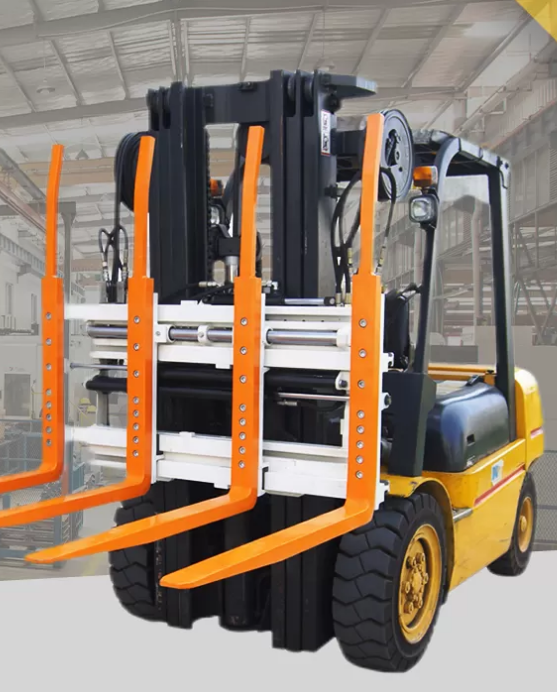Having a forklift that won't start can be frustrating and disruptive to your operations. Before calling for professional help, there are several important things you can check to diagnose and potentially resolve the issue. Here are some essential steps to follow if your forklift doesn't start:
1. Safety First
Before attempting any troubleshooting, ensure you follow proper safety procedures. Park the forklift on a level surface and engage the parking brake. Turn off the ignition and remove the key. Wait for the engine to cool down before inspecting any components.
2. Battery Check
The most common reason for a forklift not starting is a dead or weak battery. Check the battery terminals for corrosion and ensure they are tightly connected. Use a multimeter to test the battery voltage. A fully charged battery should read around 12.6 to 12.8 volts. If the voltage is significantly lower, charge the battery or replace it if necessary.
3. Fuel Level
If your forklift runs on internal combustion (gasoline, diesel, or LPG), check the fuel level. Ensure there is enough fuel in the tank to start the engine. Also, verify that the fuel shutoff valve is open.
4. Ignition System
Check the ignition system components for any issues. Look for damaged or worn-out spark plugs, ignition wires, or the distributor cap. Replace any faulty parts as needed.
5. Starter Motor
The starter motor is responsible for cranking the engine. Listen for any clicking sounds when turning the ignition key, as this could indicate a faulty starter motor. If you hear a click but the engine doesn't turn over, the starter motor may need replacement or repair.

6. Check Fuses and Relays
Inspect the fuses and relays in the forklift's electrical system. A blown fuse or a faulty relay could be preventing the electrical current from reaching critical components. Replace any damaged fuses or relays with ones of the correct rating.
7. Examine the Wiring
Inspect the wiring and connections for any signs of damage, fraying, or loose connections. Faulty wiring can lead to electrical issues that prevent the forklift from starting. Repair or replace any damaged wiring as needed.
8. Hydraulic System Lock
Some forklifts have a safety feature that prevents the engine from starting if the hydraulic system is engaged. Check to see if the lift, tilt, or other hydraulic functions are in the neutral position. If not, return them to the neutral position and try starting the engine again.
9. Clogged Air Filter
A clogged air filter can restrict airflow to the engine, leading to starting problems. Inspect the air filter and clean or replace it if necessary.
10. Inspect the Fuel System
If your forklift runs on internal combustion, check the fuel system for any issues. Look for clogged fuel filters, fuel lines, or a malfunctioning fuel pump. Clean or replace these components as needed.
11. Engine Compression
Low engine compression can make it difficult for the engine to start. Perform a compression test to check the engine's health. If the compression is low, it may indicate internal engine problems that require professional attention.
12. Check the Safety Interlock System
Some forklifts have safety interlock systems that prevent the engine from starting if specific conditions are not met. Check if all safety features, such as the seat belt, parking brake, and seat sensor, are properly engaged.
13. Review Operator Actions
Sometimes, the issue may be as simple as operator error. Ensure that the operator is following the correct starting procedures, including turning the key to the appropriate position and engaging all required safety features.
14. Consult the Operator's Manual
If you have completed all the above checks and the forklift still won't start, refer to the operator's manual for troubleshooting tips specific to your model. The manual may contain valuable information to help diagnose and resolve the issue.
Conclusion
When your forklift doesn't start, a systematic approach to troubleshooting is crucial to identify and resolve the problem. Start by checking the battery, fuel level, ignition system, and starter motor. Inspect the electrical components, wiring, and safety features. If the issue persists, examine the fuel and hydraulic systems. Remember to prioritize safety throughout the troubleshooting process. If you are unable to identify or fix the problem, it's best to seek professional assistance from a qualified forklift technician or mechanic. Regular maintenance and inspections can also help prevent starting issues and ensure smooth operations for your forklift.
If you want to know more information about Forklift Attachment, please contact us. We will provide professional answers!
If your forklift doesn't start, it's crucial to check the battery, fuel system, and ignition components. For high-quality parts and expert solutions, choose Longhe. We offer a wide range of attachments, material handling equipment, and agriculture implements, including custom services and tailored solutions. Trust Longhe for all your forklift needs.



